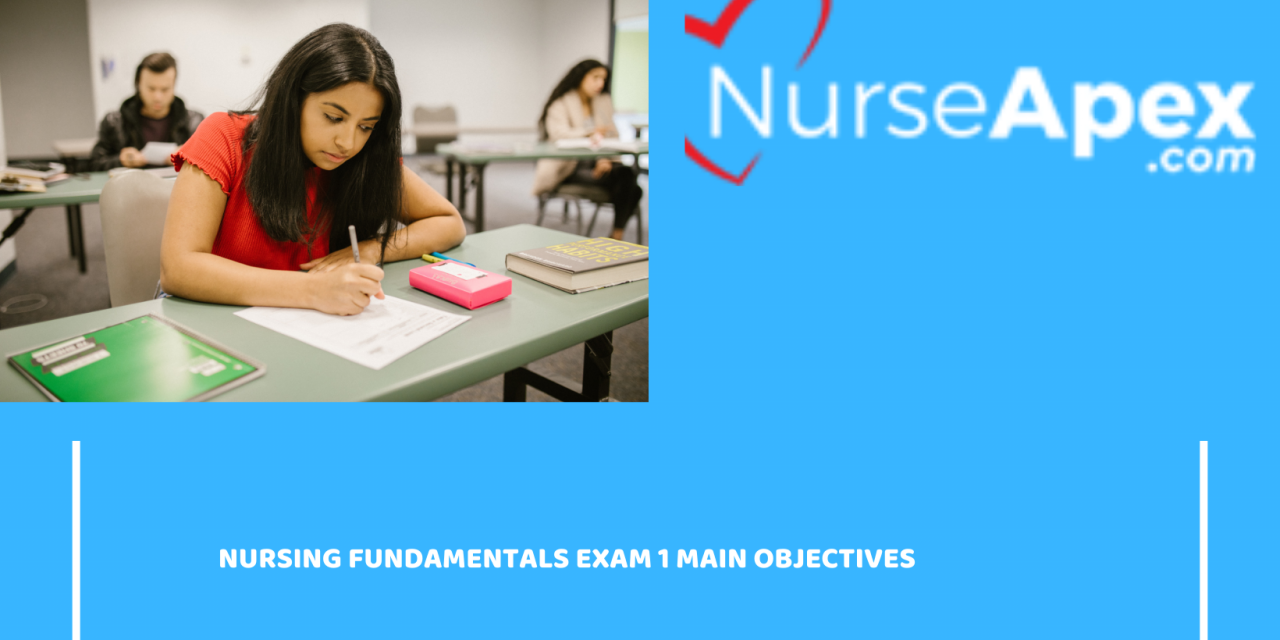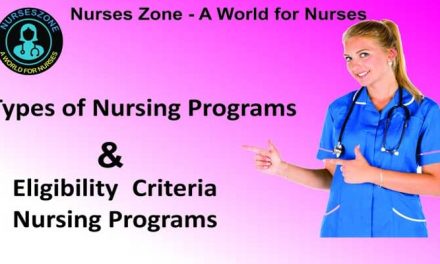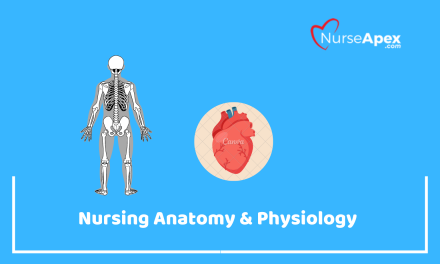Describe the areas of risk within a health care setting.
-nurses exposed to chemicals
-falls from cables, spills, etc
-medical errors
-spread of infection
patient inherent accidents: self inflicted wounds, pinching of fingers in drawers, seizures
procedure related accidents: medication administration error, improper dressings/catheter insertion
equipment related accidents: malfunction, disrepair, or misuse
Describe assessment activities to identify physical, psychosocial and cognitive changes that may affect patient safety.
-Prefer to use other alternatives other than restraints
-Not a solution, only temporary
-Restraint alternatives include more frequent observations, social interaction such as involvement of family during visitation, frequent reorientation, regular exercise, and the introduction of familiar and meaningful stimuli (e.g., involve in hobbies such as knitting or crocheting or looking at family photos) within the environment.
-If restraints are necessary, the nurse assists family members and patients by explaining their purpose, expected care while the patient is restrained, precautions taken to avoid injury, and that the restraint is temporary and protective. Informed consent from family members is required before using restraints in long-term care settings
–doctor’s order is required & facility must have policies about it
1. The assessment: nurse confirms two patient identifiers, assess behavior (such as confusion, disorientation, agitation, restlessness, combativeness, inability to follow directions, etc.) Ask yourself, does this patient create a risk to other patients?
2. Determine failure of restraint alternatives. Need a doctor’s order.
3. Review manufacturer’s instructions for restraint application before entering patient’s room. Determine most appropriate size restraint.
4. Planning: gather necessary equipment and perform hand hygiene. Then explain what you are about to do, make sure patient is comfortable and in correct anatomical position.
5. Implementation: adjust bed to proper height, lower side rail on side that the restraint is being placed. Note if there is any tubing in the way.
-Assess the condition of the skin, sensation, adequacy of circulation, and range of joint motion. Then apply the restraint. Types of restraints: belt restraint, extremity, mitten, elbow.
-Attach the restraint straps to the portion of the bed frame that moves when raising or lowering the head of the bed. Make sure straps are secure.
Secure restraint with quick-release buckle, make sure it is out of the patient’s reach
-Double check and insert two fingers under secured restraint. Assess proper placement of restraint, skin integrity, pulses, etc.
-Remove restraint at least every 2 hours to reposition and provide patient comfort
-Make sure call light is in reach
-Leave bed with wheels locked
-Perform hand hygiene and after application, evaluate patient for signs of injury every 15 minutes (circulation, vital signs, range of motion, etc.)
Describe nursing care related to seizure precautions
Generalized tonic-clonic (gran mal) seizure lasts approx. 2 min (no more than 5) → also loss of consciousness with falling, tonicity, clonicity, and incontinence
1. When it begins, note the time, stay with the patient, and call for help
-Time the seizure
2. Position them correctly → guide them to the floor if they were sitting or standing; protect the head by placing it in your lap or placing a pad under it
-Do not lift the patient from the floor is the seizure is in process; clear the surroundings; if the patient is in bed → remove pillows and raise side rails
3. Turn patient on one side, head tilted slightly forward → if possible
4. Do not restrain the patient; hold limbs loosely; loosen clothes
5. Never force their mouth open or place anything into their mouth; insert a bite block or oral airway in advance only if you recognize the possibility of a seizure
6. Stay with them
7. When they regain consciousness reorient and reassure them
8. Conduct a head to toe evaluation; look at oral cavity for breaks in mucous membranes, bruises, injuries to bones or joints
Explain the relationship between the chain of infection and transmission of infection.
-Transmission of infection can only occur if the first stages of the chain of infection is successful. Transmission occurs only if there is a susceptible host after the infectious agent has been released from the reservoir
1. Infectious agent
-can be resident or transient
-bacteria exogenous: salmonella, TB or endogenous like e.coli, staph, strep
-viruses (influenza, HIV, Hep B & C)
-protoza
-fungi
2. Reservoir
-where they survive, multiply, and wait to transfer to new host
-water, soil
-food
-humans, insects, animals
3. portal of exit
-leave the body or reservoir a find a new host
-blood
-food
-coughing, sneezing
-feces/vomiting
-sexual contact/skin
-equipment
-wind/rain/earthquakes
4. mode of transmission
-direct (person to person) or indirect (personal contact of host)
-droplet (large particles that travel up to 3 ft)
-airborne
-vehicles –> food, water, blood
-vectors –> insects
-insect bites, blood, hands, equipment, food and water, AIR, sexual activity,
5. portal of entry
-same as port of exit
-anything invasive
6. Susceptible host
-anyone
-especially, the immunicompomised, the malnourished, young and old ppl, chemo/radiation, steroids, the sick
Skin- Shedding skin removes outer layer of skin that might have organisms that adhere. Sebum (sweat) contains fatty acids that kills some bacteria.
Mouth- intact multilayer mucosa and saliva.
Eye- tears and blinking washes away microorganisms.
Respiratory Tract- the cilia and mucous trap microorganisms that are them pushed back out or that macrophages can engulf and destroy.
Urinary Tract- Urine flushing action washes away microorganisms on lining of bladder and urethra, intact multilayered epithelium provides barrier to microorganisms.
GI Tract- acidity prevents retention of bacterial contents, rapid peristalsis (wavelike movements that push the contents of the canal forward) in small intestine.
Vagina- At puberty, normal flora causes vaginal secretions to achieve pH that inhibits the growth of many microorganisms.
nonspecific defenses: physical barriers, normal flora, inflammation

Asepsis is the absence of pathogenic microorganisms. Aseptic techniques refer to practices/procedures that help reduce the risk for infection. The two types are medical and surgical asepsis.
Medical Asepsis- Referred to clean techniques. It’s used in administration of medications, enemas, tube feedings, and daily hygiene. It reduces number of pathogens and handwashing is number one.
-partial removal of pathogens
Surgical Asepsis: Prevents contamination of an open wound, serves to isolate n operative area from the unsterile environment, and maintains sterile field for surgery.
-removal of ALL pathogens
It includes procedures to eliminate all microorganisms, including pathogens and spores, from object or area. While common for surgery, it’s also done for bedside procedures like placing urinary catheter or inserting IV.
List nursing actions that control or eliminate infections in the clinical setting.
- Hand hygiene
- Respiratory Etiquette
- Standard Precautions
- Transmission based Precautions
- Cleaning and Disinfecting the Environment
- Medical Asepsis
- Surgical Asepsis
- Vaccines
- Properly administering antibiotics. –> antibiotic stewardship
- Monitoring response to drug therapy.
- Using proper hand hygiene and standard precautions.
- Supportive therapy includes proper nutrition and rest.
Discuss evidence based practice interventions used in nursing practice to decrease and eliminate HAI and DRI.
-They occur as the result of invasive procedures, antibiotic administration, the presence of multidrug-resistant organisms (MDROs), and breaks in infection prevention and control activities.
-Iatrogenic infections are a type of HAI caused by an invasive diagnostic or therapeutic procedure.
-can be exogenous or endogenous
-Extended stays in health care institutions, increased disability, increased costs of antibiotics, and prolonged recovery times. Catheter-associated urinary tract infections. Surgical site infections, Bloodstream infections, Pneumonia, Clostridium difficileDRI: methicillin-resistant Staphylococcus aureus, Streptococcus pneumoniae, Carbapenem-Resistant Enterobacteriaceae, Vancomycin-resistant Staphylococcus aureusInterventions:
•Proper use of PPE and hand hygiene is essential. It breaks down chain of transmission.
•Maintaining physical hygiene of patients helps keep microorganisms from forming.
•Education of patient and family about HAI and DRI helps keep them from spreading.
•Knowing which meds in patient history increase the patient’s susceptibility to infection.
•Lab findings help determine precautions to be used to keep these infections contained
Explain the relationship between data interpretation and validation.
-When critically interpreting assessment information, you determine the presence of abnormal findings, recognize that further observations are needed to clarify information, and begin to identify a patient’s health problems = clinical reasoning
-Before you complete data interpretation, validate the information you have collected to avoid making incorrect inferences.
–Validation of assessment data is the comparison of data with another source to determine data accuracy.
-Ask patients to validate unclear information obtained during an interview and history. Validate findings from the physical examination and observation of patient behavior by comparing data in the medical record and consulting with other nurses or health care team members. Often family or friends validate your assessment information
-The relationship between data interpretation and validation is that validation opens the door for gathering more data, as well as clarifying any data that is unclear
-Both validation and interpretation together ensure that you have collected a full database of your patient, which allows you to make further decisions involving their care.
Discuss the purposes of using nursing diagnoses in practice.
A nursing diagnosis is a clinical judgment concerning a human response to health conditions/life processes, or vulnerability for that response by an individual, family, or community that a nurse is licensed and competent to treat
-What makes it unique is that the patient is involved
-They are ever changing based on the patient’s need
Problem-focused nursing diagnosis: clinical judgement concerning an undesirable human response to a health condition/life process that exists in an individual, family or community
-Ex: impaired bed mobility, nausea, sexual dysfunction, impaired skin integrity
Risk nursing diagnosis: clinical judgement concerning the vulnerability of an individual, fam, group, or community for developing an undesirable human response to health conditions/life processes
-Ex: incision and the hospital environment = vulnerability for HAI ⇒ risk for infection
Ex: risk for infection, risk for loneliness, risk for ineffective peripheral tissue perfusion
Health promotion nursing diagnosis: clinical judgement concerning a patient’s motivation and desire to increase well being and actualized human health potential; applies to an individual, fam, group, or community
Ex: readiness for enhanced knowledge, readiness for enhanced family coping, readiness for enhanced nutrition
– Diagnoses direct the planning process and the selection of nursing interventions to achieve desired outcomes for patients.
Explain how defining characteristics and etiology individualize a nursing diagnosis.
-Etiology individualizes a nursing diagnosis because it is the disease or illness causing the problems and symptoms
-while defining characteristics are observable assessment cues that support a nursing diagnosis and provides information to create a plan of care.
-compare a client’s pattern of data with data that are consistent with normal, healthful patterns. Use accepted norms as the basis for comparison and judgment. judge whether the grouped signs and symptoms are normal for the client and whether they are within the range of healthful responses.
Describe goal setting and outcome measurement.
-A goal is a broad statement that describes a desired change in a patient’s condition or behavior.
-An outcome is a measurable change (patient behavior, physical state, or perception) that must be achieved to reach a goal
Sometimes interchanged; think of a goal as an ultimate outcome and expected outcomes as the measurable changes that must be achieved to reach a goal.
involve patient if appropriate
Describe the process of selecting the correct nursing interventions to meet identified goals and outcomes.
-Diagnostic, therapeutic, educationalWhen choosing interventions, consider six important factors:
(1) desired patient outcomes,
(2) characteristics of the nursing diagnosis,
(3) research base knowledge for the intervention,
(4) feasibility for doing the intervention,
(5) acceptability to the patient,
(6) your own competency
Explain the relationship among goals of care, expected outcomes and evaluative measures when evaluating nursing care.
-Evaluation, the final step of the nursing process, is crucial to determine whether, after application of the first four steps of the nursing process, a patient’s condition or well-being improves.
-You conduct evaluative measures to determine if your patients met expected outcomes, not if nursing interventions were completed.
-You examine the results of care by using evaluative measures, which are assessment skills and techniques (e.g., observations, physiological measurements, use of measurement scales, patient interview)
-The goal is expected response that indicates resolution of a nurse’s diagnosis, and expected outcome is the measurable, desirable, and observable patient behaviors that tells you if your interventions worked.
Develop a plan of care for a patient.
-obj. + subj data; complete health history; physical assessment; 4 C’s
2) Diagnose and identify the patient’s problem in order to make a plan.
3) Plan and set a goal and correlate them with the expected outcomes and identify appropriate nursing actions.
-priority listing; patient-centered goals + outcomes; nursing interventions; SMART
4) Implement the plan by performing nursing actions identified in planning.
-direct + indirect care
5) Evaluate the plan by determining if goals and expected outcomes are achieved and make changes if necessary.

Identify the normal ranges of selected laboratory tests (see list below).
Electrolytes: Calcium, Phosphorus, Chloride, Sodium, Potassium and Magnesium
Hematology: RBCs, WBCs, Platelets, Hemoglobin, Hematocrit & Glycosylated Hemoglobin (HgbA1C)
Blood Gases: pH (arterial), PCO2, HCO3, PaO2, SaO2
Coagulation Tests: PT/INR, PTT, aPTTAdditional
Chemistry Test: Blood glucose, Protein (total), Albumin
Identify the nursing implications related to abnormal laboratory values for the following:
Electrolytes: Calcium, Phosphorus, Chloride, Sodium, Potassium and Magnesium
Hematology: RBCs, WBCs, Platelets, Hemoglobin, Hematocrit & Glycosylated Hemoglobin (HgbA1C)
Blood Gases: pH (arterial), PCO2, HCO3, PaO2, SaO2
Coagulation Tests: PT/INR, PTT, aPTTAdditional
Chemistry Test: Blood glucose, Protein (total), Albumin
(5 questions)
-Deficit in normal function of sensory reception and perception
-Becomes difficult for the person to interact safely with the environment until new skills are learned.
-Start relying on unaffected senses
-Change behavior in adaptive or maladaptive ways; Ex/if you lose one ear, you can turn other towards person talking or just avoid people.Sensory Deprivation
-Three types of sensory deprivation reduced sensory input (sensory deficit from visual or hearing loss), the elimination of patterns or meaning from input (e.g., exposure to strange environments), and restrictive environments (e.g., bed rest) that produce monotony and boredom
-Symptoms similar to psych illness, confusion, or influence of psych drugs.Sensory Overload
-When excessive sensory stimuli is received and it can’t be ignored or disregard.
-Prevents the brain from responding appropriately so person no longer perceives environment in way that makes sense.
-Often confused with mood swings and disorientation.





